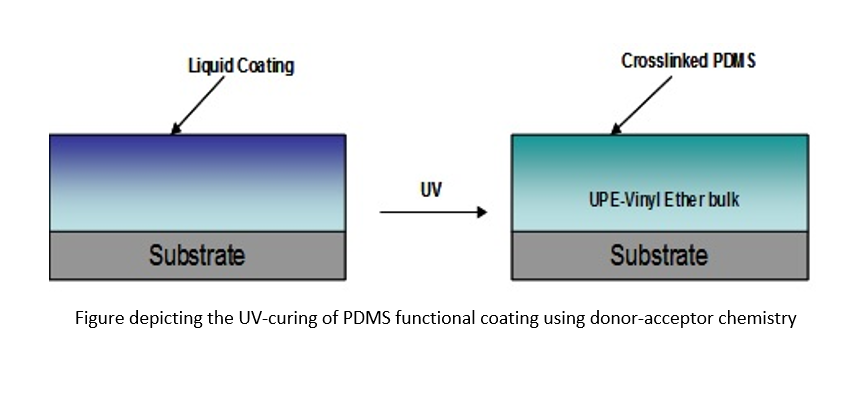UV-Curable Low Surface Energy Coatings for Fouling Release and Anti-Graffiti Applications (RFT-254)
Invention Summary
In the current market, there are several applications for low surface energy and UV curable coatings. Scientists at NDSU have developed a novel polyester composition that combines the two properties. The composition contains a modified siloxane backbone blended with co-reactants, diluents and photo-initiators. The mixing process is solvent-free and the composition can be crosslinked within a few minutes. The mixture can be cured using either visible or ultraviolet (UV) light. The modified backbone can be blended with different co-reactants, the most successful combination in the lab testing was - a monohydroxy, a telechelic, and a dihydroxy terminated PDMS UV-cured with triethyleneglycol divinylether. These coatings are beneficial in a variety of applications such as marine ship hulls, anti-graffiti surfaces, release coatings, and protective wood coatings with easily cleanable surfaces.

Benefits
- Coatings are solvent, water, and acrylate free
- Low surface energy
- Low manufacturing costs
- Resistant to Oxygen inhibition
- Eliminates health hazards associated with acrylates
- Low levels of siloxane
- Customizable with different diluents
Phase of Development
This technology has successfully completed laboratory testing with reproducible results.
Applications
Immediate applications include, but not limited to:
- Shipyards
- Paints
- Wood coatings
- Civil Infrastructure
- Packaging industry – electronics, food, paper, etc.
Patents
This technology is the subject of US Issued Patent No. 8,703,838 and is available for licensing/partnering opportunities.
Contact
NDSU Research Foundation
info@ndsurf.org
(701)231-8173
NDSURF Tech Key
RFT, 254, RFT254
Inquire about this technology >